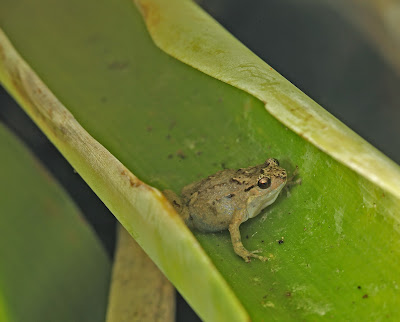There are not many grasshoppers that are known to change colour once they are adult. Most grasshoppers have nymphs (juvenile stages) that illustrate a range of colours and patterns but once they undergo the last moult to adulthood, that is it; they all are very similar in appearance.
A notable Australian exception is the Chameleon Grasshopper,
Kosciuscola tristis Sjostedt. This grasshopper is a member of a genus comprising five species that inhabit grasslands in the southeastern portion of the continent.
K. tristis occurs in alpine regions above tree-line at elevations usually greater than 1680m. Hikers often see individuals basking in the sun on granitic boulders, so it is a relatively well-known species.
It is remarkable grasshopper because adult males can gradually change colour in response to temperature.
Males are black at night or on cloudy days when the ambient temperature is low but they respond to higher temperatures by slowly turning blue.
The Chameleon Grasshopper
Kosciuscola tristis Sjostedt; Acrididae; Oxyinae; Praxibulini
a male
Females are usually greenish yellow and show little response to temperature change.
Kosciuscola tristis Sjostedt; Acrididae; Oxyinae; Praxibulini
a female
As unusual as this might be, there is an unrelated grasshopper in northern Australia that also changes colour but probably for different reasons.
Valanga sp. 1; Acrididae; Catantopinae; Cyrtacanthacridini
a newly adult female
The above grasshopper has recently moulted into the adult stage. After a short period of time the greenish yellow on the thorax will spread to the entire body rendering it a greenish yellow appearance.
Valanga sp. 1; Acrididae; Catantopinae; Cyrtacanthacridini
an older female
The above is an adult that has undergone the change from grey to green. It was found in a very dry, overgrazed pastureland with limestone outcrops on reddish, rocky soil 45 km NW of Chillagoe, Queensland. This appears to be a range extension for the species. It was previously known from a few localities near Lakefield on Cape York, Qld and along the coast adjacent to Groote Eylandt.
It was with considerable interest when I received a photo for identification from Keith and Lindsay Fisher that had similarities to V. sp 1. It was found around their place in Julatten, Qld. Note the resemblance of the colour pattern on the pronotum to the first photo above.
One of the identifying characteristics of Valanga sp. 1 is that it has bright red hind tibiae, whereas, V. irregularis has dull hind tibiae and the spines are generally tipped with black. Theirs was one of the many colour morphs of this latter widespread species.
V. irregularis frequents gardens, orchards and a number of agricultural and horticultural crops. V. sp. 1 prefers life on shrubs or in tree tops and is of no economic concern.
But why does V. sp. 1 change colour so dramatically after becoming adult? No one knows. Here is a ready-made study for a student looking for an unusual project.
Here we have two Australian grasshoppers that have biological characteristics displayed by no others anywhere in the world. Just more examples of a fauna that is unique and worthy of further study and protection.





























